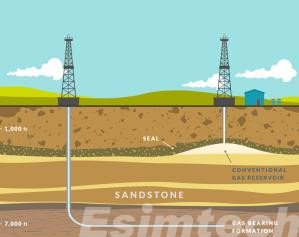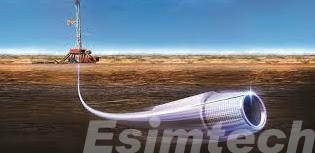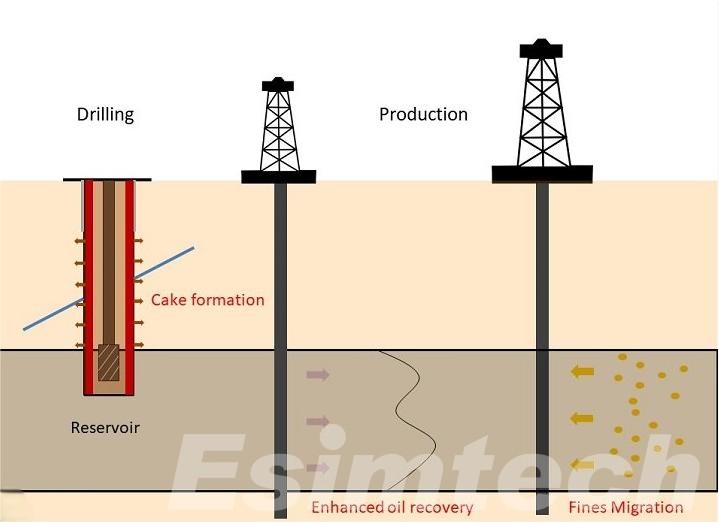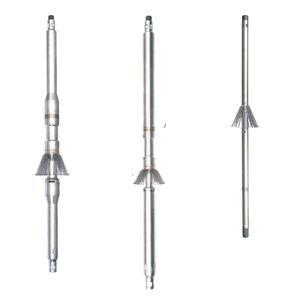Advancements in Horizontal Drilling: Enhancing Oil and Gas Recovery
In today’s energy sector, the ability to efficiently extract oil and gas reserves is crucial. Among them, the emergence of horizontal drilling technology enables us to extract resources that were previously unexplainable and significantly improve recovery rates. This article explores the history of horizontal drilling, the latest technological advancements, and investigates the role of simulation technology in optimizing this revolutionary technology.
Historical Background of Horizontal Drilling

The concept of horizontal drilling has a long history. While vertical drilling dominated early oil and gas exploration, the late 19th and early 20th centuries saw the beginnings of venturing sideways underground.
The first successful horizontal oil well dates back to 1929 in Texon, Texas, but these early efforts were crude and limited. Hydraulic fracturing, or fracking, emerged in the mid-2th century as a way to boost production from vertical wells. However, as easily accessible reserves dwindled, the industry craved a new approach.
The 1980s brought breakthroughs in Measurement While Drilling (MWD) and steerable motor assemblies. MWD provided real-time data on the wellbore’s path, while steerable motors allowed for precise navigation. This synergy transformed horizontal drilling from a risky experiment into a viable and cost-effective technique, paving the way for the advancements we see today.
Technological Advancements in Horizontal Drilling to Enhance Oil and Gas Recovery
Modern horizontal drilling employs a sophisticated arsenal of technologies to maximize recovery rates. Here’s a deeper exploration of some key advancements that redefine the boundaries of possibility:
1. Rotary Steerable Systems (RSS):

A drill bit with the capability to not only burrow forward but also adjust its direction mid-course. This is the essence of Rotary Steerable Systems (RSS). These advanced tools utilize sophisticated downhole sensors and hydraulic power to continuously fine-tune the drilling trajectory within the wellbore. Essentially, they act as the GPS of the drilling world. With RSS, operators can precisely follow even the most complex formations, maximizing reservoir contact and ultimately, recovery. Advanced RSS models can even navigate multiple wellbore branches from a single wellbore path, significantly reducing the number of well pads required and minimizing environmental impact.
2. Drilling Fluids

The seemingly straightforward act of drilling fluid circulation plays a critical role in horizontal drilling success. These specialized fluids perform a multitude of tasks:
- Maintaining Wellbore Stability: Drilling through extended horizontal sections can lead to wellbore collapse if not adequately supported. Drilling fluids are formulated with specific properties to create a thin mudcake on the wellbore wall, essentially functioning as a temporary “skin” that prevents the formation from caving in.
- Friction Reduction: Friction is a major adversary during drilling. The lubricating properties of drilling fluids minimize friction between the drill bit and the rock, reducing wear and tear on the drill string and lowering overall drilling costs.
- Cleaning and Hole Removal: Drilling generates a significant amount of rock cuttings. Drilling fluids are designed to efficiently remove these cuttings from the wellbore, ensuring the drill bit can continue making progress and preventing them from accumulating and causing problems. Effective cuttings management becomes even more critical in extended reach horizontal drilling.
The formulation of drilling fluids is a complex science, with engineers tailoring them to the specific geological conditions encountered during drilling. Factors such as formation pressure, temperature, and rock type all play a role in determining the optimal fluid properties. In some cases, specialized drilling fluids like foams or emulsions might be necessary to address specific challenges.
3. Downhole Logging Tools

Unveiling the Reservoir’s Secrets Obtaining valuable information about the reservoir once the well reaches its target zone is crucial for optimizing production strategies. Downhole logging tools are sophisticated instruments lowered into the wellbore that measure various properties of the rock formations, including:
- Porosity: This refers to the amount of empty space within the rock that can potentially hold oil and gas.
- Permeability: This indicates how easily fluids can flow through the rock. A highly permeable formation allows for efficient oil and gas production.
- Hydrocarbon Presence: These tools can detect the presence and even estimate the volume of hydrocarbons within the reservoir.
This data empowers engineers to pinpoint the most productive zones within the reservoir and design completion strategies to maximize oil and gas flow. For instance, they might identify zones with higher permeability and strategically place perforations in the wellbore casing to target those areas for optimal production.
These are just a few examples of the technological advancements that have transformed horizontal drilling into a powerful tool for the oil and gas industry. By continuously innovating and pushing the boundaries of engineering, we can expect even greater efficiency and recovery rates in the years to come.
Horizontal Drilling Simulation Technology
Simulation technology is crucial in horizontal drilling, providing operators with detailed models of subsurface conditions and potential drilling outcomes. Advanced software replicates the geological environment, predicting wellbore behavior to enhance decision-making and operational efficiency.
1. Reservoir Modeling: Reservoir modeling software creates detailed 3D models of the subsurface, enabling engineers to visualize reservoir structure, porosity, and fluid distribution. These models use data from seismic surveys, well logs, and core samples to help plan optimal well paths and identify productive zones, enhancing hydrocarbon recovery and reducing drilling costs.
2. Drilling Simulation Software: Drilling simulation tools predict and mitigate potential drilling problems by modeling wellbore stability, torque, and drag. These simulations help operators anticipate challenges and optimize drilling parameters, ensuring smoother and more efficient operations. For example, wellbore stability models identify zones at risk of collapse, while torque and drag simulations reduce friction and mechanical wear.

3. Fracture Modeling: Fracture modeling software simulates hydraulic fracturing, aiding engineers in designing effective treatments. These models predict fracture propagation based on injection parameters and geological characteristics, optimizing fluid injection rates and proppant concentrations. This ensures more efficient and effective hydraulic fracturing, enhancing overall productivity.
-1-1024x576-min.jpg)
4. Integrated Asset Modeling: Integrated asset modeling combines reservoir, wellbore, and surface facility simulations to provide a comprehensive view of the entire production system. This approach helps operators evaluate interactions between components and optimize production strategies, ultimately maximizing the economic value of the asset.
5. Real-Time Simulation and Monitoring
Real-time simulation and monitoring systems use continuous data feeds from downhole sensors and surface equipment to update models instantly. This real-time capability allows operators to respond immediately to changing conditions, enhancing operational efficiency, safety, and decision-making, reducing downtime, and improving overall drilling performance.
Conclusion
Horizontal drilling allows us to extract resources that were previously inaccessible and significantly improve recovery rates. From precision drilling tools to powerful simulation software, the continuous progress of technology is breaking through possible boundaries. As we strive to achieve a more sustainable energy future, horizontal drilling will undoubtedly continue to play an important role in meeting our energy needs.
